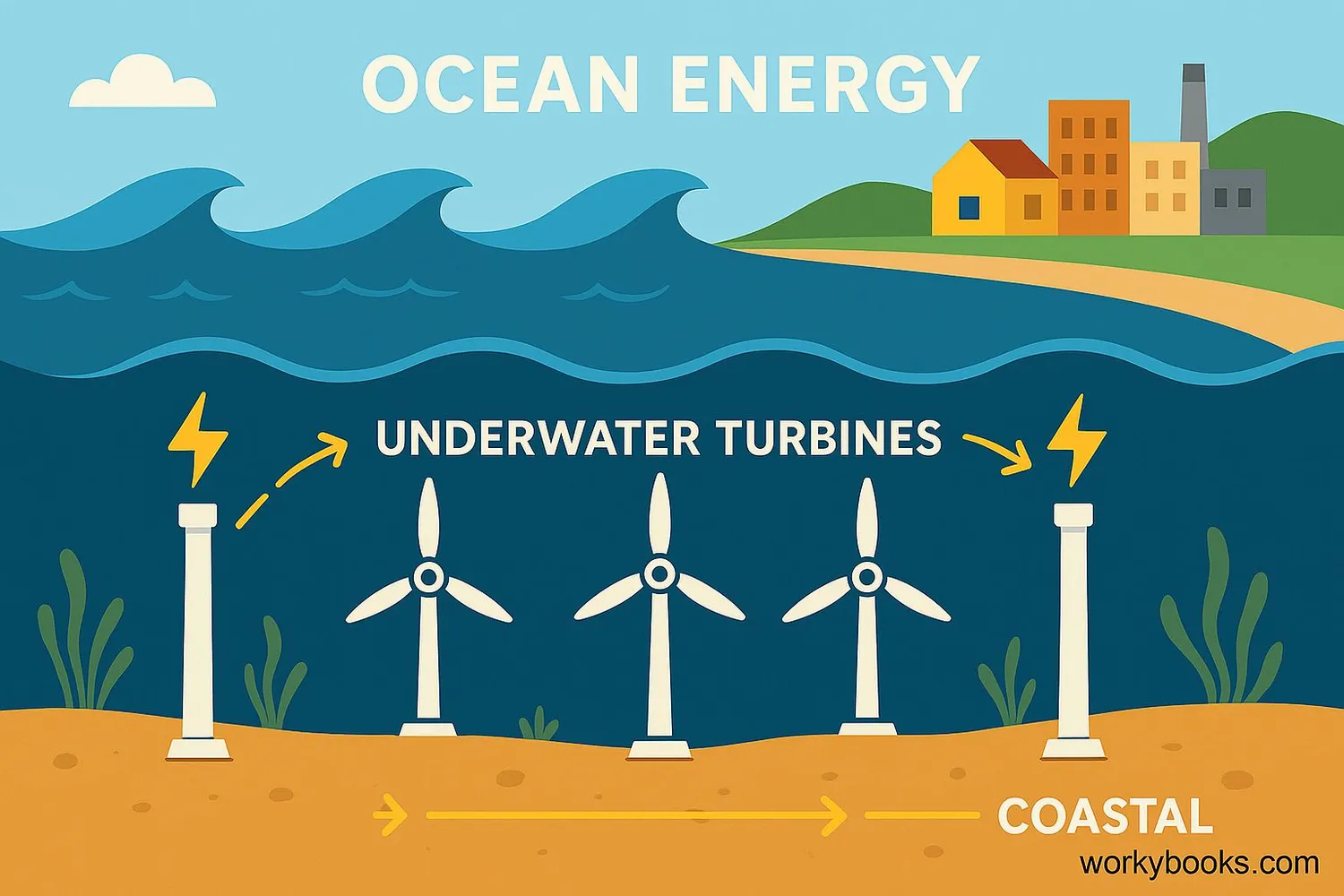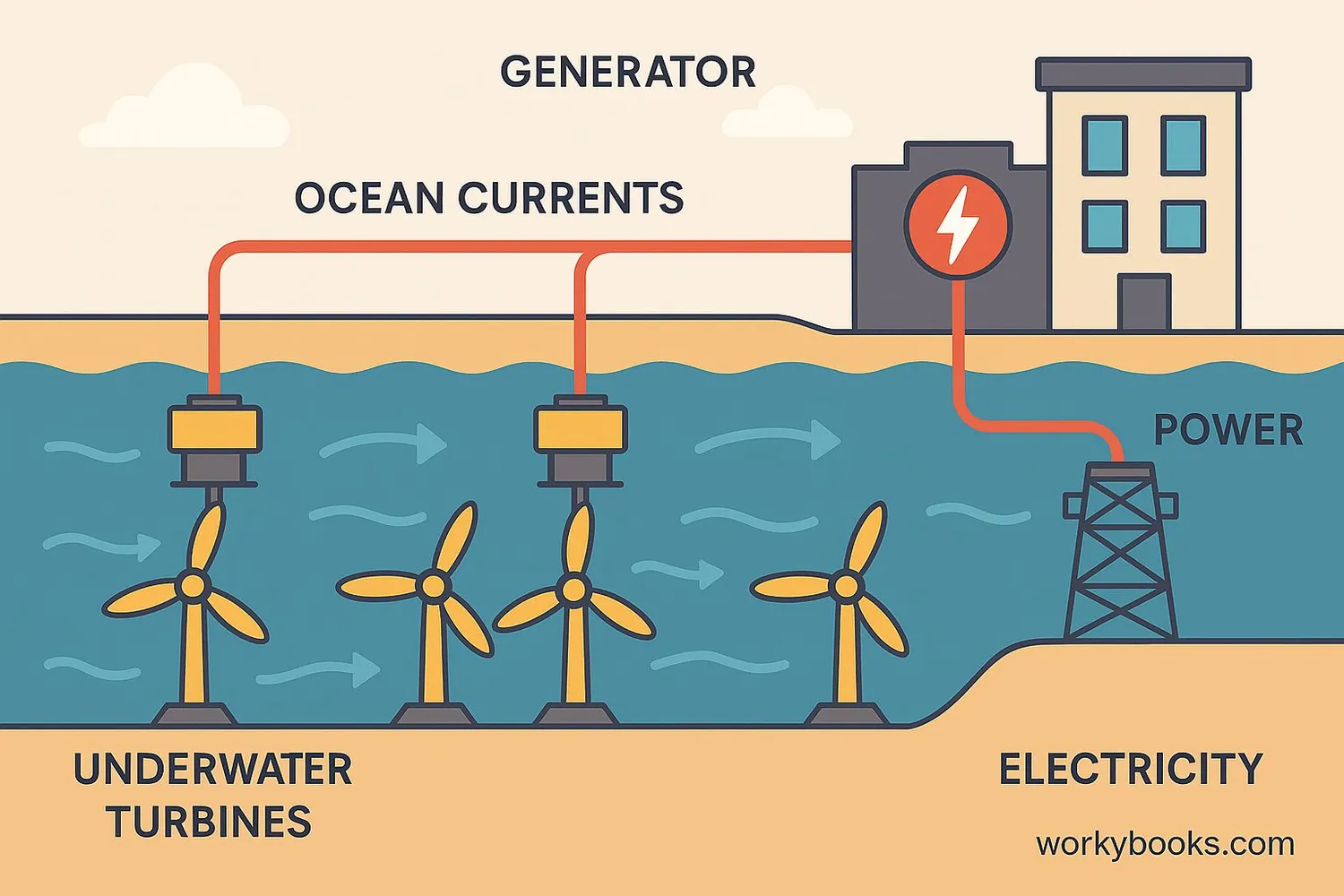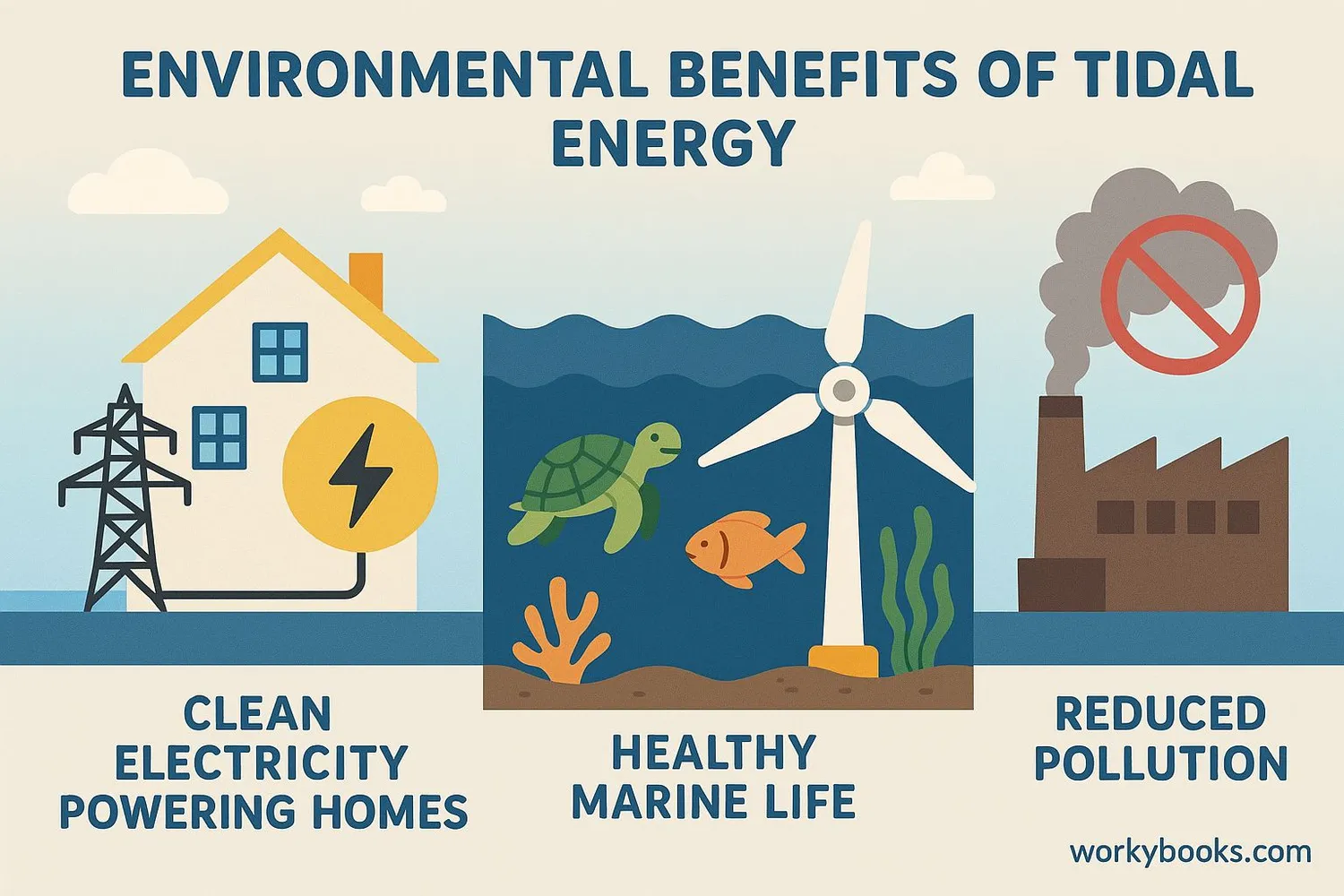Tidal Energy - Definition, Examples, Quiz, FAQ, Trivia
Discover how ocean tides create clean, renewable electricity!
What is Tidal Energy?

Tidal energy is a form of renewable power that harnesses the natural movement of ocean tides to generate electricity. Just like wind turbines capture wind energy, tidal turbines capture the energy from moving water!
Tides are created by the gravitational pull of the moon and the sun on Earth's oceans. This causes the ocean water to rise and fall in a predictable pattern. Coastal areas with large differences between high and low tides are ideal for generating tidal energy.
Energy Fact!
Tides are more predictable than wind or solar energy, making tidal power a reliable renewable resource!
How Tidal Energy Works

Tidal energy systems capture the kinetic energy (movement energy) from flowing water during tidal changes. Here's how this clean energy process works:
Tidal Movement
Ocean tides rise and fall due to the moon's gravity
Water Flow
Moving water passes through tidal turbines
Turbine Rotation
Water flow causes turbine blades to spin
Power Generation
Spinning turbines drive generators to produce electricity
Energy Transfer
Electricity travels through underwater cables to the shore
The two main types of tidal energy systems are:
Tidal Stream Generators: These work like underwater wind turbines, using the flow of tidal currents to spin blades.
Tidal Barrages: These are dam-like structures built across tidal basins. Water flows through turbines as the tide comes in and goes out.
Power Potential!
Just 1 square meter of fast-flowing tidal water can generate more electricity than 1 square meter of wind blowing at 90 mph!
Why Tidal Energy is Important

Tidal energy offers significant advantages as we work toward a sustainable energy future:
Renewable & Sustainable
Tides will continue as long as the moon orbits Earth, making this a never-ending energy source
Environmentally Clean
Produces no greenhouse gases or pollution during operation
Predictable Power
Tides follow reliable cycles, unlike weather-dependent solar and wind
Tidal energy helps address important challenges:
• Reduces our reliance on fossil fuels that contribute to climate change
• Provides clean electricity for coastal communities
• Creates jobs in engineering, marine technology, and maintenance
• Works well with other renewable sources to provide consistent power
While tidal energy has great potential, it's important to carefully consider marine ecosystems when installing tidal turbines to protect ocean life.
Tidal Energy Quiz
Test your tidal energy knowledge with this quiz! Answer all 5 questions to see how much you've learned.
Frequently Asked Questions
Here are answers to common questions about tidal energy:
Tidal Energy Trivia
Discover amazing facts about tidal power:
Ancient Technology
Tidal mills have been used since Roman times! The earliest known tidal mill dates back to the 6th century in Ireland, using tide power to grind grain.
Powerful Potential
The Bay of Fundy in Canada has the world's highest tides - up to 16 meters (53 feet)! This single location could theoretically power 15 million homes.
Eco-Friendly Design
Modern tidal turbines rotate slowly (10-20 revolutions per minute) allowing fish to swim safely through them without harm.
Global Leaders
South Korea has the world's largest tidal power plant, generating enough electricity for a city of 500,000 people! France and the UK also have significant tidal projects.


